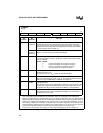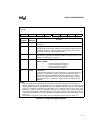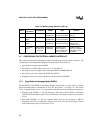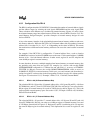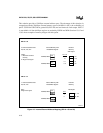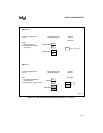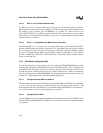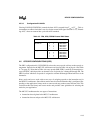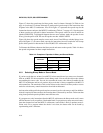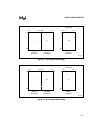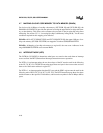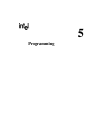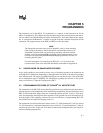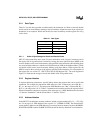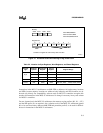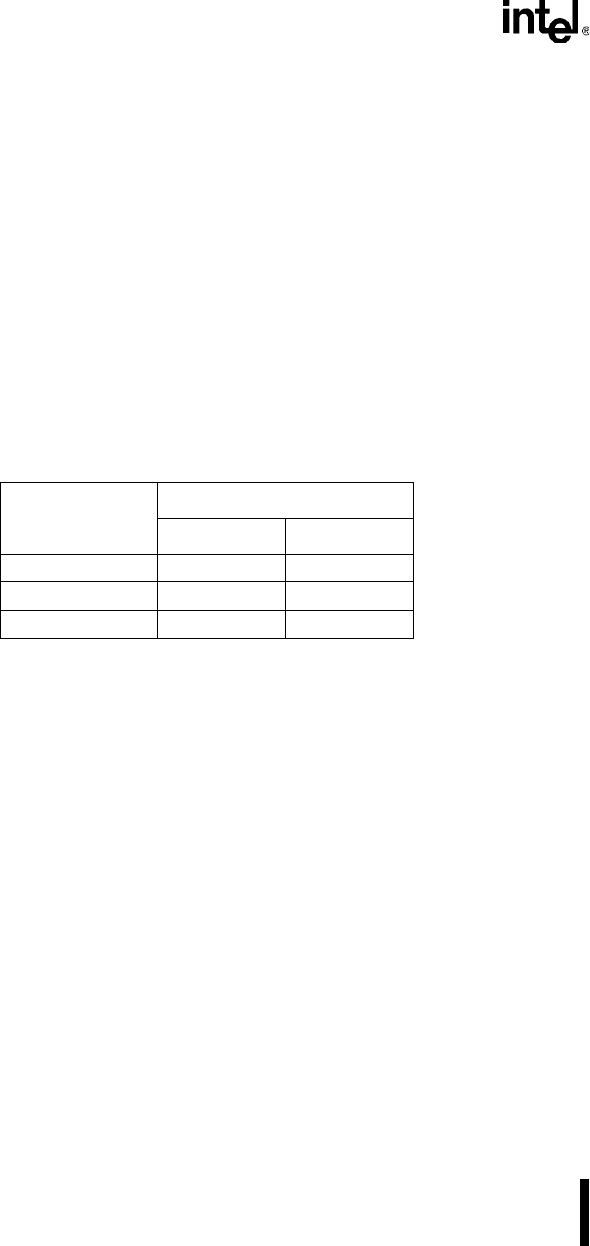
8XC251SA, SB, SP, SQ USER’S MANUAL
4-14
Figure 4-7 shows the opcode map for binary mode. Area I (columns 1 through 5 in Table A-6 on
page A-4) and area II (columns 6 through F) make up the opcode map for the instructions that
originate in the MCS 51 architecture. Area III in Figure 4-7 represents the opcode map for the
instructions that are unique to the MCS 251 architecture (Table A-7 on page A-5). Note that some
of these opcodes are reserved for future instructions. The opcode values for areas II and III are
identical (06H–FFH). To distinguish between the two areas in binary mode, the opcodes in area
III are given the prefix A5H. The area III opcodes are thus A506H–A5FFH.
Figure 4-8 shows the opcode map for source mode. Areas II and III have switched places (com-
pare with Figure 4-7). In source mode, opcodes for instructions in area II require the A5F escape
prefix while opcodes for instructions in area III (MCS 251 architecture) do not.
To illustrate the difference between the binary-mode and source-mode opcodes, Table 4-4 shows
the opcode assignments for three sample instructions.
4.6.1 Selecting Binary Mode or Source Mode
If you have code that was written for an MCS 51 microcontroller and you want to run it unmod-
ified on an MCS 251 microcontroller, choose binary mode. You can use the object code without
reassembling the source code. You can also assemble the source code with an assembler for the
MCS 251 architecture and have it produce object code that is binary-compatible with MCS 51
microcontrollers. The remainder of this section discusses the selection of binary mode or source
mode for code that may contain instructions from both architectures.
An instruction with a prefixed opcode requires one more byte for code storage, and if an addition-
al fetch is required for the extra byte, the execution time is increased by one state. This means that
using fewer prefixed opcodes produces more efficient code.
If a program uses only instructions from the MCS 51 architecture, the binary-mode code is more
efficient because it uses no prefixes. On the other hand, if a program uses many more new instruc-
tions than instructions from the MCS 51 architecture, source mode is likely to produce more ef-
ficient code. For a program where the choice is not clear, the better mode can be found by
experimenting with a simulator.
Table 4-4. Examples of Opcodes in Binary and Source Modes
Instruction
Opcode
Binary Mode Source Mode
DEC A 14H 14H
SUBB A,R4 9CH A59CH
SUB R4,R4 A59CH 9CH



